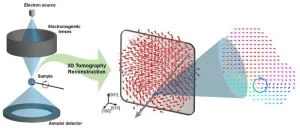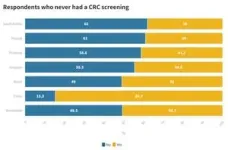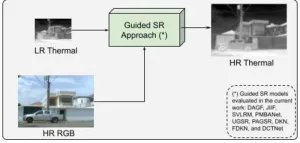(Press-News.org) Materials that can maintain a magnetized state by themselves without an external magnetic field (i.e., permanent magnets) are called ferromagnets. Ferroelectrics can be thought of as the electric counterpart to ferromagnets, as they maintain a polarized state without an external electric field. It is well-known that ferromagnets lose their magnetic properties when reduced to nano sizes below a certain threshold. What happens when ferroelectrics are similarly made extremely small in all directions (i.e., into a zero-dimensional structure such as nanoparticles) has been a topic of controversy for a long time.
The research team led by Dr. Yongsoo Yang from the Department of Physics at KAIST has, for the first time, experimentally clarified the three-dimensional, vortex-shaped polarization distribution inside ferroelectric nanoparticles through international collaborative research with POSTECH, SNU, KBSI, LBNL and University of Arkansas.
About 20 years ago, Prof. Laurent Bellaiche (currently at University of Arkansas) and his colleagues theoretically predicted that a unique form of polarization distribution, arranged in a toroidal vortex shape, could occur inside ferroelectric nanodots. They also suggested that if this vortex distribution could be properly controlled, it could be applied to ultra-high-density memory devices with capacities over 10,000 times greater than existing ones. However, experimental clarification had not been achieved due to the difficulty of measuring the three-dimensional polarization distribution within ferroelectric nanostructures.
The research team at KAIST successfully solved this 20-year-old challenge by implementing a technique called atomic electron tomography. This technique works by acquiring atomic-resolution transmission electron microscope images of the nanomaterials from multiple tilt angles, and then reconstructing them back into three-dimensional structures using advanced reconstruction algorithms. Electron tomography can be understood as essentially the same method with the CT scans used in hospitals to view internal organs in three dimensions; the KAIST team adapted it uniquely for nanomaterials, utilizing an electron microscope at the single-atom level.
Using atomic electron tomography, the team completely measured the positions of cation atoms inside barium titanate (BaTiO3) nanoparticles, a well-known ferroelectric material, in three dimensions. From the precisely determined 3D atomic arrangements, they were able to further calculate the internal three-dimensional polarization distribution at the single-atom level. The analysis of the polarization distribution revealed, for the first time experimentally, that topological polarization orderings including vortices, anti-vortices, skyrmions, and a Bloch point occur inside the 0-dimensional ferroelectrics, as theoretically predicted 20 years ago. Furthermore, it was also found that the number of internal vortices can be controlled depending on their sizes.
Prof. Sergey Prosandeev and Prof. Bellaiche (who proposed with other co-workers the polar vortex ordering theoretically 20 years ago), joined this collaboration and further proved that the vortex distribution results obtained from experiments are consistent with theoretical calculations.
By controlling the number and orientation of these polarization distributions, it is expected that this can be utilized into next-generation high-density memory device that can store more than 10,000 times the amount of information in the same-sized device compared to existing ones.
Dr. Yang, who led the research, explained the significance of the results: “This result suggests that controlling the size and shape of ferroelectrics alone, without needing to tune the substrate or surrounding environmental effects such as epitaxial strain, can manipulate ferroelectric vortices or other topological orderings at the nano-scale. Further research could then be applied to the development of next-generation ultra-high-density memory.”
This research, with Chaehwa Jeong from the Department of Physics at KAIST as the first author, was published online in Nature Communications on May 8th (Title: Revealing the Three-Dimensional Arrangement of Polar Topology in Nanoparticles).
The study was mainly supported by the National Research Foundation of Korea (NRF) Grants funded by the Korean Government (MSIT).
Figure 1. Three-dimensional polarization distribution of BaTiO3 nanoparticles revealed by atomic electron tomography.
(Left) Schematic of the electron tomography technique, which involves acquiring transmission electron microscope images at multiple tilt angles and reconstructing them into 3D atomic structures.
(Center) Experimentally determined three-dimensional polarization distribution inside a BaTiO3 nanoparticle via atomic electron tomography. A vortex-like structure is clearly visible near the bottom (blue dot).
(Right) A two-dimensional cross-section of the polarization distribution, thinly sliced at the center of the vortex, with the color and arrows together indicating the direction of the polarization. A distinct vortex structure can be observed.
END
A 20-year-old puzzle solved: KAIST research team reveals the 'three-dimensional vortex' of zero-dimensional ferroelectrics
2024-05-31
ELSE PRESS RELEASES FROM THIS DATE:
Children’s Hospital Los Angeles team finds new potential causes of rare and lethal bone cancer
2024-05-31
Little is known about the genetics and biology of chordoma, a rare and aggressive bone tumor. Chordomas occur in approximately one in a million people in the U.S. a year and only five percent of these are in children. These tumors can arise anywhere along the spine in adults. However, in children these tumors occur mostly at the base of the skull, making complete surgical removal challenging or impossible. Any tumor remnants are treated with high doses of radiation—which can cause significant damage to the developing brain.
A team of researchers led by Xiaowu Gai, PhD and Jaclyn Biegel, PhD, FACMG, at the Center for Personalized Medicine ...
One in four Thai concerned about colorectal cancer screening cost
2024-05-31
According to research led by Prof. Varut Lohsiriwat, Professor of Surgery, Division of General Surgery (Section of Colorectal Surgery) of Siriraj Hospital, at Mahidol University, CRC is the third most common cancer in Thailand, accounting for 11% of the cancer burden. It is the only malignancy with an increased incidence in both genders in the country.
By 2040, the burden of CRC is projected to increase to 3.2 million new cases and 1.6 million deaths per year representing a 66% and 71% rise in new cases and deaths respectively relative ...
Infants hear significantly more speech than music at home, UW study finds
2024-05-31
Speech and music are the dominant elements of an infant’s auditory environment. While past research has shown that speech plays a critical role in children’s language development, less is known about the music that infants hear.
A new University of Washington study, published May 21 in Developmental Science, is the first to compare the amount of music and speech that children hear in infancy. Results showed that infants hear more spoken language than music, with the gap widening as the babies get older.
“We wanted to get a snapshot of what’s happening in infants’ home environments,” said corresponding author ...
New coral disease forecasting system led by University of Hawai'i team
2024-05-31
Research led by the University of Hawaiʻi at Mānoa Hawaiʻi Institute of Marine Biology (HIMB) has led to a new tool for forecasting coral disease that could help conservationists step in at the right times with key interventions. Ecological forecasts are critical tools for conserving and managing marine ecosystems, but few forecasting systems can account for the wide range of ecological complexities in near-real-time.
Using ecological and marine environmental conditions, the Multi-Factor Coral Disease Risk product predicts the risk of two diseases across reefs in the central and western Pacific and along the east coast of Australia. An article ...
Tobacco funded research still appearing in top medical journals
2024-05-31
Tobacco-funded research is still appearing in highly-cited medical journals - despite attempts by some to cut ties altogether, finds an investigation by The Investigative Desk and The BMJ today.
Although the tobacco industry has a long history of subverting science, most leading medical journals don’t have policies which ban research wholly or partly funded by the industry.
And even when publishers, authors and universities are willing to restrict tobacco industry ties, they struggle ...
Trout in mine-polluted rivers are genetically ‘isolated’
2024-05-31
Trout living in rivers polluted by metal from old mines across the British Isles are genetically “isolated” from other trout, new research shows.
Researchers analysed brown trout at 71 sites in Britain and Ireland, where many rivers contain metal washed out from disused mines.
While trout in metal-polluted rivers appear healthy, they are genetically distinct – and a lack of diversity in these populations makes them vulnerable to future threats.
By comparing the DNA of trout in rivers with and without metal pollution, the researchers found that metal-tolerant trout ...
How researchers are protecting AI of the future
2024-05-31
Trust is vital to the widespread acceptance of AI across industries, especially when safety is a concern. For example, people may be hesitant to ride in a self-driving car knowing that the AI running it can be hacked. One barrier to increasing trust is that the algorithms powering AI are vulnerable to such attacks.
Dr. Samson Zhou, assistant professor in the Department of Computer Science and Engineering at Texas A&M University, and Dr. David P. Woodruff, professor in the Computer Science Department at Carnegie Mellon University, hope to strengthen algorithms used by big data AI models against attacks. Big data AI models are ...
Enhancement of guided thermal image super-resolution approaches
2024-05-31
Researchers of CIDIS at ESPOL Polytechnic University have developed a new method to enhance thermal image super-resolution by employing synthetic imagery. This novel approach utilizes high-resolution images from the visible spectrum to guide the super-resolution of low-resolution thermal images, significantly improving the detail and utility of thermal imaging across various applications.
When visualizing thermal images, one typically imagines the blurry, less-detailed outputs common with standard thermal ...
Virginia Tech scientists develop visual tool to help people group foods based on their levels of processing
2024-05-31
Fralin Biomedical Research Institute at VTC scientists studying ultra-processed foods have created a new tool for assessing the rewarding and reinforcing properties of foods that make up 58 percent of calories consumed in the United States. The foods have been linked to a wide range of negative health outcomes.
The research, which was published in April in the journal Appetite, provides a collection of carefully curated images of minimally processed and ultra-processed foods matched on 26 characteristics, including macronutrients, sodium, dietary fiber, calories, price, and visual characteristics such as a color and portion size.
The work was based on the NOVA classification system ...
Glimpses of a volcanic world: New telescope images of Jupiter's moon Io rival those from spacecraft
2024-05-31
New images of Jupiter's volcano-studded moon Io, taken by the Large Binocular Telescope on Mount Graham in Arizona, offer the highest resolution of Io ever achieved with an Earth-based instrument. The observations were made possible by a new high-contrast optical imaging instrument, dubbed SHARK-VIS, and the telescope's adaptive optics system, which compensates for the blurring induced by atmospheric turbulence.
The images, to be published in the journal Geophysical Research Letters, reveal surface features as small as 50 miles across, ...










